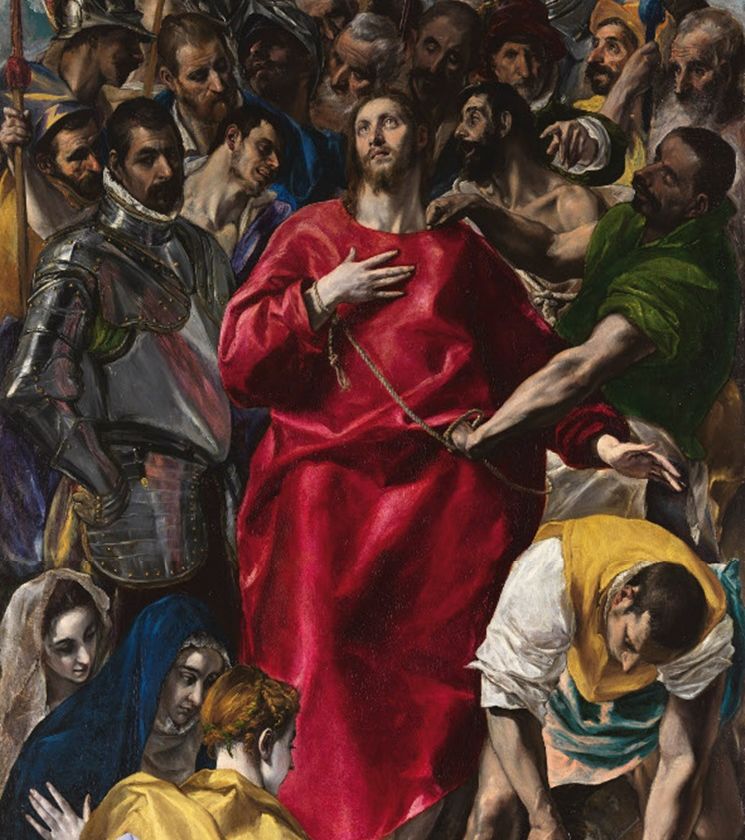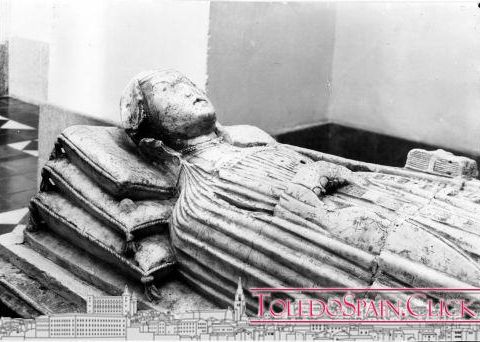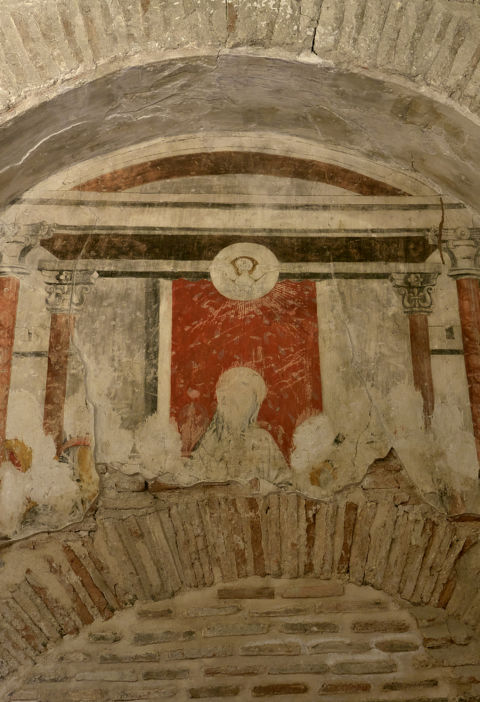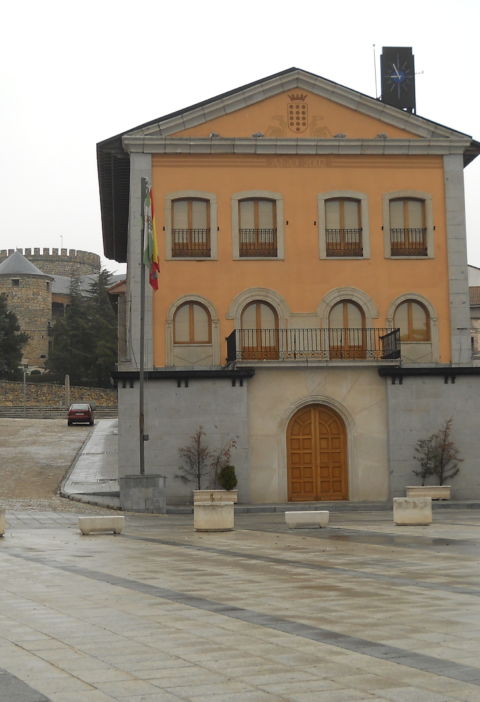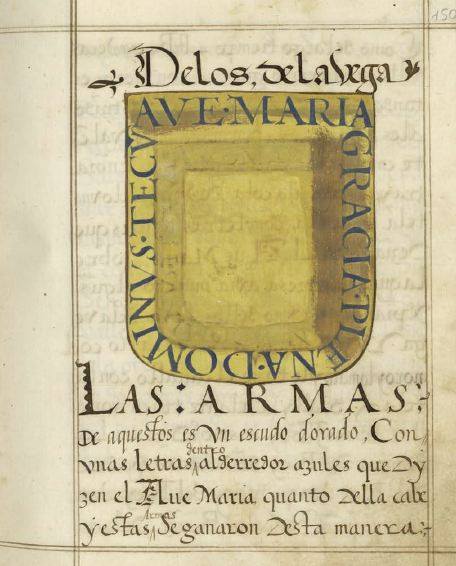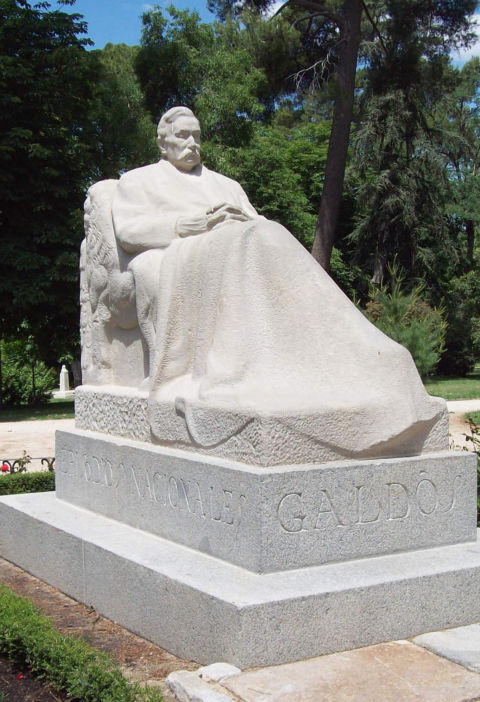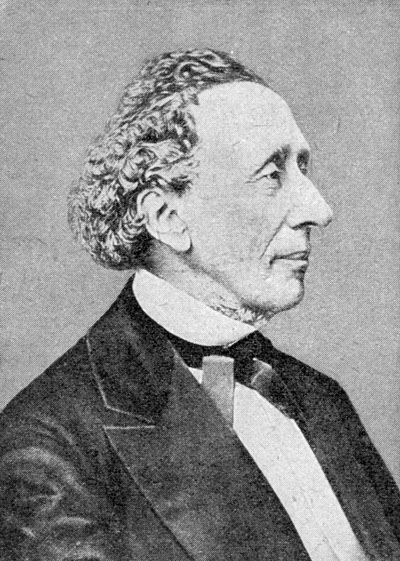Yesterday March 24, 2011 was reopened the Museo del Greco after its remodeling (news) We take this opportunity to recover the article that some years ago we dedicated to this painter so important to the city of Toledo.
” Crete gave him life, and the brushes
Toledo, best homeland where it starts
to achieve with death eternities”
It was strange not to dedicate a section on this website to El Greco… One of the best-known “monuments” outside Toledo must have an adequate space in Toledo Legends or not? There has been much debate about the Cretan painter… There were also several centuries of oblivion during which his paintings were “dusting” in the churches of Toledo or the province. Really, El Greco was one of the “secrets” of Toledo, known only by a few since his death.
And indeed in recent years many tourists come to the city with the healthy intention of visiting the paintings of El Greco, ignoring many other monuments that the city has.
Already Góngora dedicated to the insigne cretense the following soneto, to his death:
It’s in elegant form, oh, pilgrim
of shining porphyry, hard key,
the brush denies the softer world
that gave spirit to wood, life to linen…
After his death, his work and person fall into oblivion, and it will not be until the middle of the nineteenth century when he is rediscovered. Intellectuals and artists of this century marvel at the work of El Greco, and there are numerous articles and initiatives to recover the image of the painter. In 1912 the book “El Greco o el secreto de Toledo”, by Maurice Barrés, appears, inaugurating an intense period of adoration towards the painter. More recently, Gregorio Marañón carried out very interesting research on his work, which we will describe later.
Insurance that you are also interested: 13 impressive caves or subterranean in Toledo
Index of Contents
Life and Work of El Greco
Domenicos Theotocópuli was born on Crete, an island occupied by the Greek population, and with a strong presence of Jewish and Moorish populations, a fact that would greatly influence the life of Domenico.
He learned the trade of painter in the schools of Venice, where he worked with the Bassano and Rome, trying to adjust to the aesthetics prevailing at that time. One of the secrets of this period in Domenico’s life was the reason why he arrived in Spain. Perhaps the immense work of El Escorial attracted him? Around 1573, when he was thirty-five years old, El Greco arrived in Madrid, with few details of his work at that time. Later he was hired in Toledo to decorate the altarpiece of Santo Domingo el Antiguo and from this city little would come out.
He died in Toledo in 1614 and is buried here, along with his abundant work.
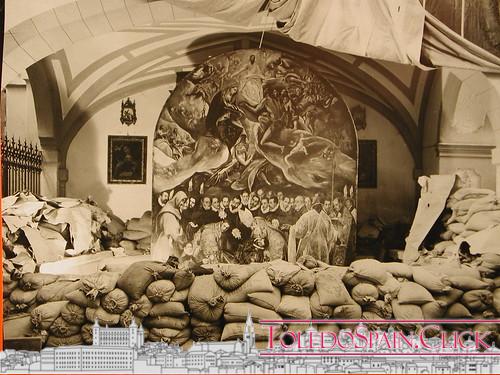

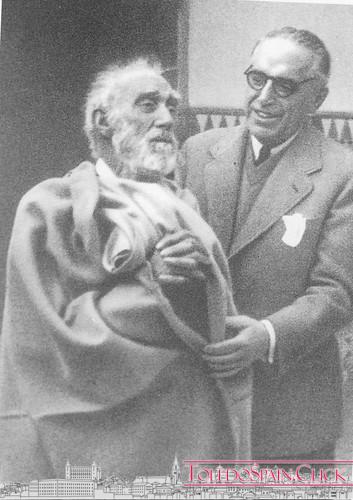
 El Greco Arte y Oficio, exhibition in 2014
El Greco Arte y Oficio, exhibition in 2014
In the Museum of Santa Cruz there are works from several churches in the city, as well as in the Sacristy of the Cathedral. And in the middle of Toledo’s Jewish quarter we can visit what has been called “La Casa del Greco” (actually part of the palaces of Samuel-Ha-Leví, builder of the Transit synagogue and Jewish treasurer of King Don Pedro), which houses various works of the painter and is itself a very reliable reconstruction of what a stately home would have looked like in the times of El Greco.
In Santo Domingo el Antiguo, where El Greco was buried (although it is not very clear that he is still there) we can still contemplate the magnificent altarpiece. Do not forget before passing by Santo Tomé, a place of pilgrimage for every tourist in the city (who knows nothing else), and not for this less important reason, where the very famous “Burial of the Lord of Orgaz” is housed.
The Burial of the Lord of Orgaz
Popularly known as “El entierro del Conde de Orgaz” It was painted in 1586 for the church of Santo Tomé and since then it has been there. Nowadays it is in rooms correctly adapted to show the work and which do not disturb the worship of the church. Its measures are remarkable, 7,70 x 4,70 m. The painting represents the miracle by which Saint Augustine and Saint Stephen appear in the burial of the Lord of Orgaz, back in 1312, helping in his burial and thanks to donations that had allowed the foundation of a convent of religious of Saint Augustine.
This painting has been written over and over again. Its invoice is masterful, architectural rigor and organic unity. But some curiosities that normally do not appear in these books tell us the following: All the knights who appear in the composition are personalities of the time, many of them identified. The gentleman on the left, who looks directly at us, is Greco himself, and the child his son. In heavenly glory, on the right, he painted Philip II with a white beard and Cardinal Tavera. The burial is not so, since there is almost no earth in the painting, only heaven.
We end this curious and secret biography with a poem by Alberti dedicated to the Cretan painter:
” A glory with icterus brakes,
a biliary spilled song…
livid turmoil, dismayed yearning,
ansia verde, amarillo frenesí…
O purgatory of color, punishment
runaway, punishment of the line,
uncoyuntado laberinto, etérea
cave of mysterious ugly beauties,
of awful beauties, penando
about an eternity always amazed!
El Greco, on the Web:
– Article in Wikipedia
– Biography in “ArteHistoria.com”
– Article in ToledoForgotten about El Greco’s models
Photos:
– Search Flickr.com
* As a curiosity, and since you have come this far reading this text, there is a program on the Web that automatically converts a photograph of your face to the shapes it would have if it had been painted by El Greco. Click here to access the page containing the online application and select the link “Click here to load in a new image. A passport photo (which you have to upload to the application) gives very good results (as you can see in the previous link of the Flickr search results). It is important that in the last phase of the process you indicate to the program that you want to convert it to “El Greco” in the drop-down list that appears on the right… And you will be able to save your image.
Article originally published on January 24, 2006.

